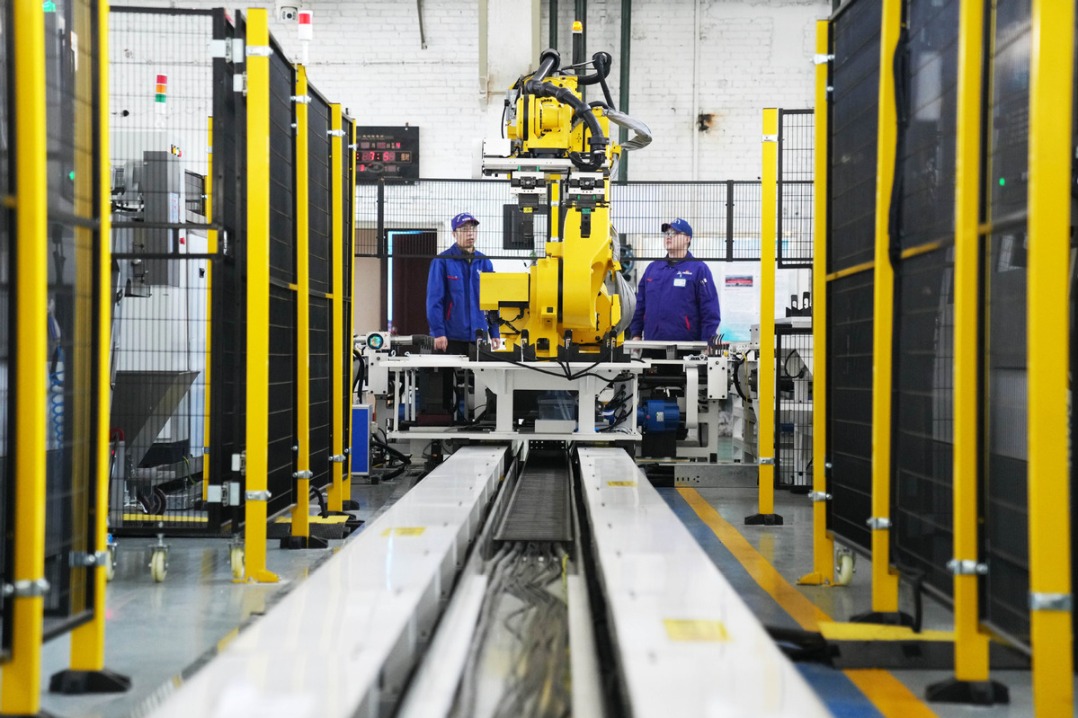Tongguan: The town fired-up for porcelain

Located 30 kilometers from downtown Changsha, Tongguan sub-district sits on the east bank of the Xiangjiang River, facing west towards Jinggang town on the other side.
The 29-square-kilometer area is famous for its production of porcelain, with its kilns firing for more than a thousand years. A specialty of the area is under glaze porcelain which features delicate designs and decoration being applied to the ceramic before a shiny glaze is coated on top. So popular was the town's porcelain that it became an important pivot point along the ancient Maritime Silk Road, with its products being shipped across the globe to 29 countries.

The Tongguan ancient street. [Photo by Zou Lin / Changsha Evening News]
The beginning of Tongguan's ceramic industry dates back to the late Tang Dynasty, during the period of the An-Shi Rebellion (AD 755 – 763), when a group of northern refugees came to the area and began crafting useful and decorative items using clay. This year marks the 1,260th since the industry first began in Tongguan.
As recently as 1998, a treasure trove of the area's ancient artifacts was found aboard a wrecked Arab merchant ship named Batu Hitam, found in the Indonesian Billiton sea area. The ship was loaded to the brink with a staggering 60,000 examples of Chinese porcelain, with most of it coming from Tongguan's kilns.
The Tongguan Kiln of Changsha was the most famous of all the ancient kilns in production throughout China during the Tang Dynasty and Five dynasties periods. It was well-known for being the first to create the shiny red glaze coating on its porcelain. It was also the first kiln to decorate its porcelain with more than just artwork, adding elements of prose and poetry, advertisements, inscriptions and characters. Tongguan's kiln reached its peak fame during the Tang Dynasty with its products exported to 29 countries worldwide, making it the greatest contributor to the influence of China's ceramic culture across the globe.
In March 2010, China's first national archaeological relic park was officially launched in the town, the Changsha National Archaeological Park of Tongguan Kiln. It recognizes the brilliance of the famous kiln during its flourishing period in the Tang Dynasty. A poem from that time describes it perfectly – "Fire blazing at the mouth of the Xiangjiang River, Smoke thickening in the clouds on Dongting Lake".

A porcelain store in Tongguan, Changsha. [Photo/en.changsha.gov.cn]
Over the past millennium, the kilns of Tongguan have experienced rises and falls as the ebb and flow of public demand and industry supply fluctuated. In its most prosperous time, tens of thousands of workers were busy firing at the kilns, but when recession or decreased demand struck the town many of the workers left.
In 2000, one of the ceramic masters, Liu Kunting, returned to Tongguan to re-ignite his ceramics business. During the first few years he experienced losses but after deciding to focus on the domestic market instead of exports his business finally picked up.
Now, Liu's business has expanded into a 500-square-meter workshop filled with the fruits of his ceramic labor. Learning the craft from his grandfather, Liu Zizhen, the young Liu then continued his study at the Zhejiang Institute of Arts. And it doesn't end there, as a third generation is set to inherit the craft. Liu's 23-year-old son is currently training and learning artistic techniques in order to follow in his father's footsteps and enter the ceramics business.

Visitors experience the ceramic craft at a workshop in Tongguan, Changsha. [Photo provided to chinadaily.com.cn]
Following the success of Liu, more skilled workers and masters are returning to the Tongguan. The local government has also established a Ceramic Industrial Association.
Currently, a series of key projects, like the Xiangjiang River Changsha comprehensive hub, the Beijing-Zhuhai Highway double-track project and the construction of Dianchang Road and Xiangjiang Avenue are stimulating Tongguan's resurgent development. China Development Bank (CDB) plans to invest 1 billion yuan to renovate the area's shantytowns, construct parks and cultural centers.
Investor Macrolink Holdings recently announced a 10 billion yuan ($1.5 billion) plan to build the town into a top-level cultural tourism resort, with the first phase project to finish and open to public in 2017. Upon completion of the whole program, the town is expected to receive 5 million visitors annually, and provide jobs for around 10,000 people.
MOST POPULAR
- 1 A look at China's economy in Q1 of 2024
- 2 China to remove foreign ownership restrictions in value-added telecom services in pilot areas
- 3 Query service of A Guide to Working and Living in China as Business Expatriates launched
- 4 Clear negative lists to speed up services trade
- 5 Canton Fair opens in China with surge in overseas purchasers
Editors' Picks
 Infographic:
How to understand China's production capacity
Infographic:
How to understand China's production capacity
 Infographic:
Milestones of China's journey to space
Infographic:
Milestones of China's journey to space





